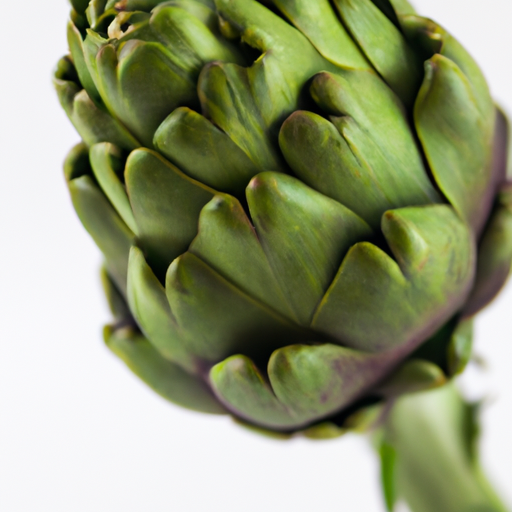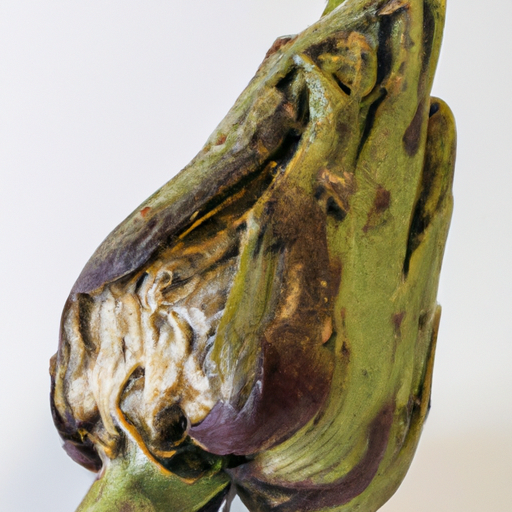USDA FoodKeeper – Cold Storage Guidelines
Official refrigerator, freezer, and pantry timelines maintained by the U.S. Department of Agriculture.
Visit USDA FoodKeeperBursting with unique texture and flavor, globe artichokes are not just a culinary delight but also a healthy addition to your plate. To enjoy their peak freshness, store them in the fridge and savor their taste within four days—these beauties don’t hold up well past their prime!
Get our 16-page guide with exact timelines for 70+ foods. Save €1,500+/year by knowing what's actually safe to eat.


Fridge
32-40°F (0-4°C)
Keep in a perforated plastic bag in the vegetable drawer
4 days
Discoloration, wilting leaves, mold growth
Steamed, roasted, or added to salads
Artichoke hearts in brine
Sure thing! So, expiration dates and best quality dates for Globe Artichokes are quite different. Expiration dates are usually about safety. It's not safe to eat foods past their expiration dates because they can spoil and make you sick. On the other hand, best quality dates are more about the taste and texture of the food. For Globe Artichokes, you can still eat them after the best quality date, but the flavor and texture may not be as good. If it looks good, smells good, and tastes good, then it's usually safe to eat even after the best quality date. Personally, I would still eat a Globe Artichoke a few days after the best quality date if it looks fresh and smells fine. I might just cook it a bit longer to make sure it's fully cooked. It's always better to be safe than sorry, but a little flexibility with best quality dates can save some good food from going to waste.
To check if a Globe Artichoke has gone bad, look for dark or moldy spots on the outer leaves, a strong sour or musty smell, and a slimy or mushy texture when touched. A fresh Globe Artichoke should have tightly packed, firm, and vibrant green leaves with no signs of discoloration or decay.
Hey there! Let's chat about globe artichokes and how to keep your tummy happy and healthy when enjoying these delicious veggies. Now, when it comes to globe artichokes, there are a few foodborne illness risks to be aware of. Make sure to wash them thoroughly before cooking, as bacteria like E. coli or salmonella can lurk on the outer leaves. If you start feeling symptoms like stomach cramps, diarrhea, or vomiting after eating globe artichokes, it could be a sign of food poisoning. It's always better to be safe than sorry, so listen to your body and seek medical help if needed. To keep things safe in the kitchen, store your globe artichokes in the fridge, separate from raw meats and seafood. When preparing them, use a clean cutting board and knife to avoid cross-contamination. So, next time you whip up a tasty globe artichoke dish, remember to clean them well, cook them thoroughly, and store them properly. Your stomach will thank you!
Hey there! Storing Globe Artichokes can be a bit tricky, but with a few smart hacks, you can keep them fresh for longer. First off, trim the stems and remove any wilted outer leaves before storing. Place them in a bowl of water like a bouquet of flowers and cover them loosely with a plastic bag in the fridge. This helps to keep them hydrated and fresh. Another cool trick is to sprinkle a little water on the artichokes and wrap them in a damp paper towel before placing them in a resealable plastic bag. This method mimics the conditions of a vegetable crisper and can extend their shelf life. If you want to get fancy, you can also try pickling artichoke hearts to enjoy them later. They make a delicious addition to salads, pizzas, or antipasto platters. Remember, artichokes don't last as long as some other veggies, so try to use them within a week for the best flavor and texture. Enjoy your artichokes!
Hey there! Let's chat about the intriguing globe artichoke! Did you know that this spiky veggie is actually a type of thistle? Pretty cool, right? Historically, the globe artichoke has been revered for its medicinal properties dating back to ancient times. The ancient Greeks and Romans believed it had aphrodisiac powers and was considered a luxurious delicacy. In some cultures, like in Italy and France, artichokes hold a special place in their culinary traditions. From creamy artichoke dips to stuffed artichokes, these dishes are a labor of love that bring people together around the table. Here's a fun fact: California even has an annual Artichoke Festival celebrating this unique veggie with artichoke cooking contests and artichoke-themed parades! So next time you're at the market and spot a globe artichoke, remember its rich history, cultural significance, and versatility in the kitchen. Who knows, you might just discover a new favorite dish!
If Globe Artichoke has been stored properly in the fridge for 5 days, it should still be safe to eat. However, the quality may have declined. Check for any signs of spoilage like a slimy texture or off-putting odor before consuming.
After blanching Globe Artichoke, you can freeze it for up to 6 months. Properly blanching and freezing helps preserve the texture and flavor of the artichoke for longer periods. Store in airtight containers or freezer bags to prevent freezer burn.
Cooking Globe Artichoke can actually extend its shelf life. Once cooked, store the artichoke in the fridge and consume within 3-4 days for the best quality. Proper storage after cooking helps maintain the flavor and texture of the artichoke.
Yes, you can store Globe Artichoke next to other vegetables in the fridge. However, to prevent cross-contamination, make sure to store them in separate plastic bags or containers. This helps maintain the freshness and prevents the spread of odors.
Freezing Globe Artichoke can slightly affect its texture. When thawed, the artichoke may become slightly softer compared to fresh. To minimize texture changes, use frozen artichoke in cooked dishes like soups, stews, or casseroles where slight texture differences are less noticeable.
While shelf life can vary slightly between brands, Globe Artichoke generally has a shelf life of around 4 days in the fridge. Factors such as packaging, storage conditions during transport, and freshness at the time of packaging can influence shelf life. Always check the expiration date on the packaging for the most accurate information.
When transporting Globe Artichoke for a 2-hour journey, pack it in a cooler with ice packs to maintain a consistent temperature. Avoid leaving the artichoke in direct sunlight or in a hot car. Once you reach your destination, promptly refrigerate the artichoke to ensure its freshness and safety.
Globe Artichoke tends to last longer in cooler temperatures, like winter. Higher temperatures in summer can accelerate spoilage, reducing the shelf life of the artichoke. During warmer months, store the artichoke in the coldest part of the fridge to help extend its freshness.
Stop guessing about expiration dates. Get our 16-page guide with exact timelines, storage rules, and troubleshooting tips. Save €1,500+/year.
Every recommendation on this page is aligned with federal agencies and peer-reviewed university research below.
Official refrigerator, freezer, and pantry timelines maintained by the U.S. Department of Agriculture.
Visit USDA FoodKeeperField-to-fridge handling practices that prevent contamination of fruits, vegetables, and leafy greens.
Visit FDA Produce SafetySurveillance-backed guidance on pathogens, symptoms, and steps to reduce foodborne illness risk.
Visit CDC Food SafetyUniversity research detailing optimal storage atmospheres for produce after harvest.
Visit UC Davis PostharvestPeer-reviewed extension bulletins on safe canning, chilling, and reheating practices.
Visit Penn State ExtensionNeed deeper reading? Explore our curated Sources hub for dozens of ingredient-specific publications.
Scan your food directly and get instant safety info using our AI-powered camera feature.
Ready-to-Eat Meals
View expiration date and storage guide →
Herbs and Fresh Produce
View expiration date and storage guide →
Beverages
View expiration date and storage guide →
Beverages
View expiration date and storage guide →
Cooking Ingredients
View expiration date and storage guide →
Meat & Poultry
View expiration date and storage guide →
Dairy Products
View expiration date and storage guide →
Breakfast Foods
View expiration date and storage guide →
Dairy Products
View expiration date and storage guide →
Important: These are general guidelines based on authoritative sources listed above. Always use your best judgment and when in doubt, throw it out. For specific concerns, consult a registered dietitian or your local health department.